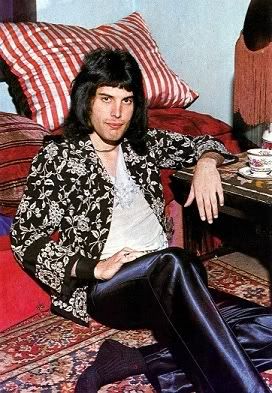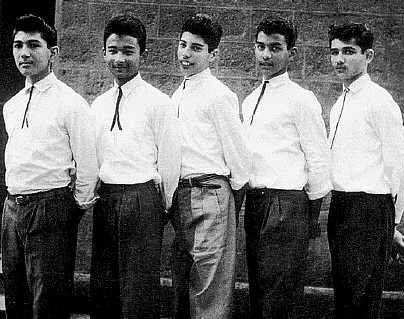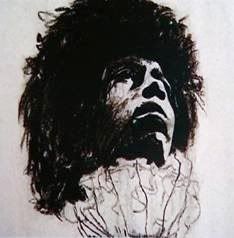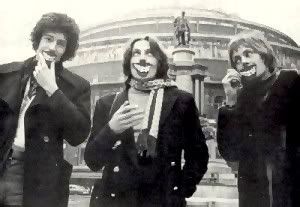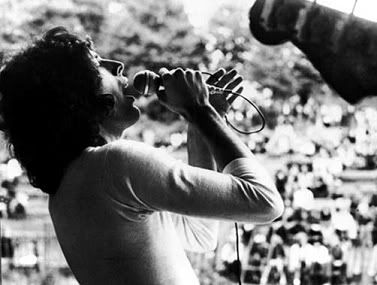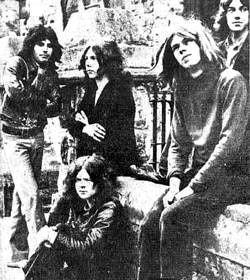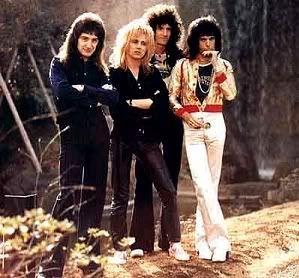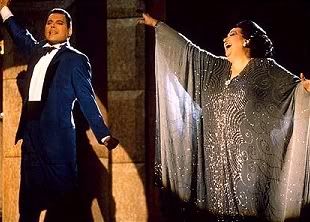Home First Steps -
Childhood in Zanzibar Growing up in India
Culture Shock Her Majesty -
The Queen ‘No Bed Of Roses’ ‘Love Of My
Life’ ‘Bohemian Rhapsody’
The Great Pretender Live Aid An Evening At
The Opera Mercury - the musician The all-round
artist Mercury - the prophet Last Days The Legend The Queen
File
FMQ in German FMQ-GALLERY My Fairy King
video Freddie Mercury memorial site Guestbook/Contact Gateway page QUEEN NEWS Links BOOKS ARTICLES
Brian May
Roger Taylor John Deacon Miscellaneous Horoscope Philosophy
corner Updates
Official biography People about
Freddie About Me
OFFICIAL BIOGRAPHY
Taken from Record
Collector
Freddie Mercury was born Farrokh
Bulsara on Thursday September 5th 1946 on
the small spice island of Zanzibar. His parents, Bomi
and Jer Bulsara, were both
Persian [actually Parsis – D.K.]. His father, Bomi, was a civil servant, working as a High Court cashier
for the British Government. Freddie’s sister, Kashmira,
was born in
As St Peter’s was an English school, the sports played there were typically
English. Freddie loathed cricket and long-distance running, but he liked
hockey, sprint and boxing. At the age of 10 he became a school champion in
table tennis. Freddie was not only a good sportsman, his artistic skills were
incomparable. At the age of twelve he was awarded the school trophy as Junior
All-Rounder. He loved art and was always sketching for friends or relatives.
He was also music mad and played records on the
family’s old record player, stacking the singles to play constantly. The music
he was able to get was mostly Indian, but some Western music was available. He
would sing along to either and preferred music to school work.
The principal headmaster of St Peter’s had noticed
Freddie’s musical talent, and wrote to his parents suggesting that they might
wish to pay a little extra on Freddie’s school fees to enable him to study
music properly. They agreed, and Freddie began to learn to play the piano. He
also became a member of the school choir and took part regularly in school
theatrical productions. He loved his piano lessons and applied himself to them
with determination and skill, finally achieving Grade IV both in practical and
theory.
In 1958, five friends at St Peter’s – Freddie Bulsara, Derrick Branche, Bruce
Murray, Farang Irani and
Victory Rana – formed the school’s rock’n’roll band, the Hectics,
where Freddie was the piano player. They would play at school parties, at
annual fetes and school dances, but little else is known about them.
The Hectics with Freddie
in the centre
In 1962, Freddie finished school, returned to
Zanzibar and spent his time with friends in and around the markets, parks and
beaches. In 1964, many of the British and Indians, due to political unrest in
Zanzibar, left their country, although not under forcible pressure, and among
those driven out were the Bulsaras who migrated to
England.
Initially they lived with relatives in Feltham,
Middlesex, until they were able to find their own small, terraced house in the
area. Freddie was seventeen, and had derided he
wanted to go to art college, but needed at least one A level to ensure he could
get in. In September 1964 he enrolled at the nearby Isleworth Polytechnic.
During vacations he took a variety of jobs to earn
some money; one was in the catering department at Heathrow Airport, a stone’s throw
from home, and the other was on the Feltham trading estate, where he had a job
in a warehouse lifting and stacking heavy crates and boxes. His fellow workers
commented on his ‘delicate’ hands, certainly not suited for such work, and
asked him what he did. He told them he was a musician just ‘filling in time’,
and such was his charm that those co-workers were soon doing the lion’s share
of his work.
He studied hard, although he preferred the
aesthetic side of school life to the more mundane academic side and easily
achieved his Art A level, leaving Isleworth in the spring of 1966. His grade A pass and his natural skill ensured that he was readily
accepted by Ealing College of Art and, in September 1966, Freddie began a
graphic illustrating course at that college.
After Jimi Hendrix
exploded onto the scene in 1967, and Freddie became an ardent fan, he spent
time sketching and drawing his hero; drawings he would frame and use to
decorate the walls of his flat in Kensington, rented by his friend Chris Smith,
where Freddie had moved from the family home in Feltham. At that time
Kensington was an important place to be for the art crowd – it was the base of
the famous Biba boutique and the home of Kensington
Market, frequented by the then ‘in’ crowd.
A fellow student at Ealing College was bass player
Tim Staffell, with whom Freddie became good friends.
As Tim’s and Freddie’s friendship became closer, Tim took him along to
rehearsals of his band called Smile, with Brian May on the guitar and Roger
Taylor on the drums. Freddie got on famously with Brian and Roger and loved the
sound that Smile had achieved; he also had immense admiration and respect for
Brian’s guitar-playing. Inspired by Smile, Freddie began to experiment with
music for the first time since leaving India.
Smile – from left to right: Brian May, Tim Staffel, Roger Taylor
He initially began to practice with Tim, another
art student Nigel Foster, and with Chris Smith. “The first time I heard
Freddie sing I was amazed,” recounts Chris. “He had a huge voice.
Although his piano style was very affected, very Mozart, he had a great touch.
From a piano player's point of view, his approach was unique.”
“Freddie and I eventually got to write little bits
of songs which we linked together,” adds Chris. “It makes sense when you consider
Bohemian Rhapsody. It was an interesting way getting from one piece in a
different key signature to another. But I don’t think we actually finished
anything. Freddie certainly taught me a lot at those sessions. He had great,
natural sense of melody. I picked that up straight away. For me it was the most
interesting aspect of what he was doing.”
Freddie left Ealing College in June 1969, with a
diploma in graphic art and design, and a few commissions for adverts in local
newspapers. He moved into Roger Taylor’s flat, and that summer opened a stall
with Roger at Kensington Market, initially selling artwork by himself and
fellow Ealing students, and later Victorian or whatever clothes, new and
second-hand, he could lay his hands on.
In the summer of 1969 Freddie was introduced to a
Freddie first met Ibex on
While Freddie’s trip to
Somewhere between 9th September and the end of
October 1969 Ibex underwent a mini upheaval – at Freddie's instigation. “I
recall him canvassing the idea of calling the band Wreckage, but nobody was
very enthusiastic,W reveals Mike Bersin. “Then he phoned me one night and said, ‘The
others don’t mind. How do you feel?’ I said, ‘If they agree, then fine’. When I
spoke to the others about it, Freddie had phoned them all up and had the same
conversation.”
The name-change went hand-in-hand with the
departure of drummer Mike ‘Miffer’ Smith. He was
replaced by Richard Thompson, the former drummer in Brian May’s 1984. Despite
flashes of true potential, the end of the 1960s also marked the end of
Wreckage. Gigs were few and far between, and while John Taylor, Richard
Thompson and Freddie remained in
Freddie started to search for another band for
himself. He found
They offered him the job, and in late 1969 Freddie became the lead
singer with
Freddie and Chris, who was about seventeen at the time, became close
friends and Chris moved into the house that Freddie shared with Smile in
In April 1970 Tim Staffell decided to leave
Smile, and Freddie joined them as lead singer. Freddie decided to change the
name of the band to Queen, he also changed his last
name to Mercury.
The further biography of Freddie Mercury is to considerable degree a
story of Queen.
from left to right: John Deacon, Roger Taylor, Brian May,
Freddie Mercury
In 1970 Freddie met Mary Austin. They lived together for seven years and
remained good friends until his death.
In 1971 John Deacon joined the band and Queen were
complete. Freddie designed the band’s logo using their birth signs: two fairies
for him (Virgin), two lions for Roger and John (Leo) and a crab for Brian
(Cancer). Freddie was the author of the first Queen song
that entered the British charts (Seven Seas Of Rhye),
the first big hit (Killer Queen) and the most famous Queen song that was on the
top of charts for 9 weeks (Bohemian Rhapsody). Freddie has always been
considered the front-man of the band.
In 1975 Queen toured
On
In 1980 Freddie changed his image. He cut his hair and grew a moustache.
At the end of 1982 Queen all agreed they wanted to take break from each
other. They announced they wouldn’t be touring throughout 1983. Freddie had
been thinking of making a solo album for some time, and at last he had time to
do something about it. He booked studio time at Musicland in
In 1983 Freddie attended a performance of Verdi’s Un Ballo In Maschera
at the Royal Opera House sometime in May. It was the first time when he saw
Spanish opera diva Montserrat Caballé, and the sheer
power and beauty of her voice mesmerized him.
On
The first single from his forthcoming solo album was I Was Born To Love You. It was released on
The early part of 1987 was very quiet for Queen, so Freddie took the
opportunity to go into Townhouse Studios to do some solo work. It resulted in a
remake of the classic Platters’ song The Great Pretender. The single was
released on February 23rd.
In March 1987 Freddie flew to
At the end of May the
On
October 8th was the last time Freddie Mercury performed on
stage. At the time, he was terribly ill with AIDS, although he didn’t want
people to know about it. He announced that fact the day before he died. Being
ill he continued to compose and record songs and even took part in making
videos.
On November 24th, 1991 Freddie died peacefully at his home in
London of AIDS-related bronchial pneumonia.
On April 20th,
Thank you Freddie. We love you.
Jacky Gunn & Jim Jenkins. As It Began

